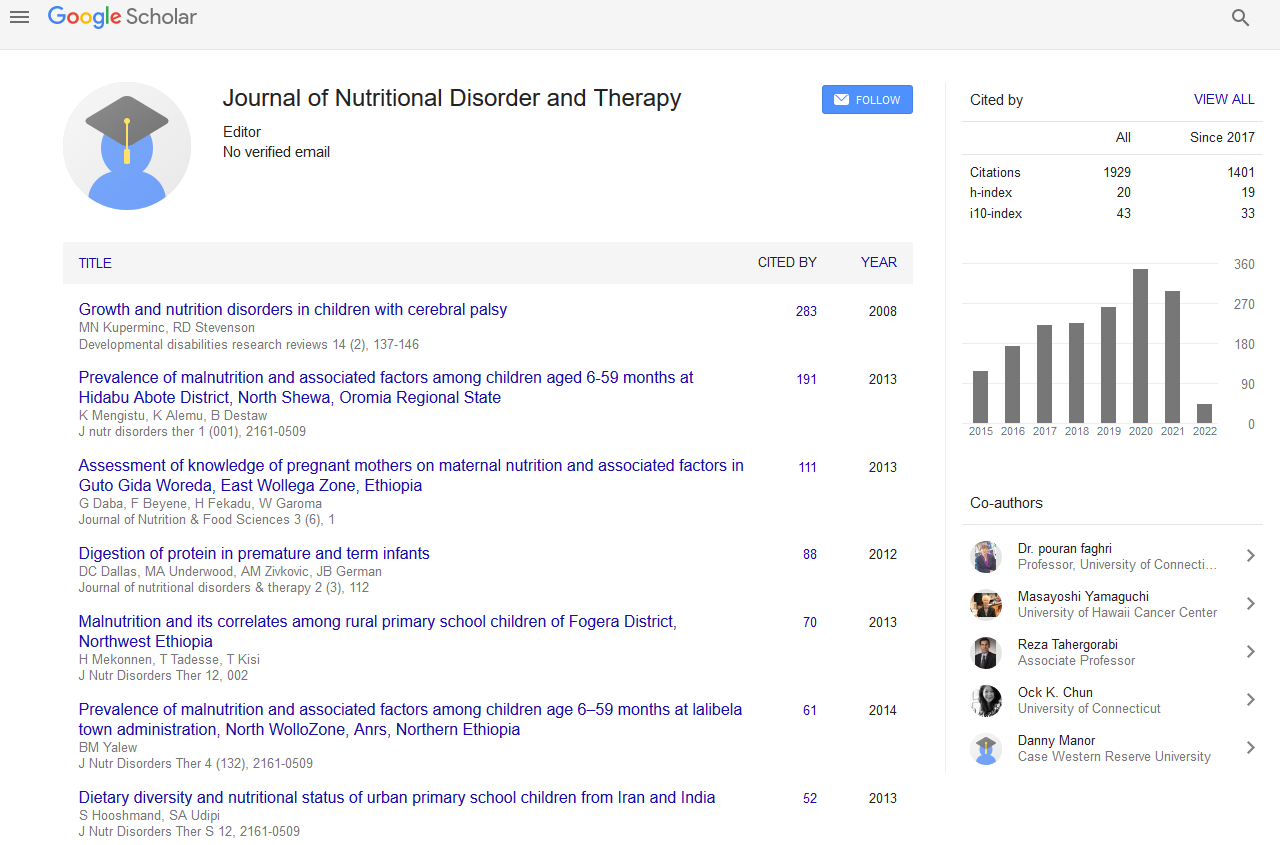Indexed In
- Open J Gate
- Genamics JournalSeek
- Academic Keys
- JournalTOCs
- Ulrich's Periodicals Directory
- RefSeek
- Hamdard University
- EBSCO A-Z
- OCLC- WorldCat
- Publons
- Geneva Foundation for Medical Education and Research
- Euro Pub
Useful Links
Share This Page
Journal Flyer

Open Access Journals
- Agri and Aquaculture
- Biochemistry
- Bioinformatics & Systems Biology
- Business & Management
- Chemistry
- Clinical Sciences
- Engineering
- Food & Nutrition
- General Science
- Genetics & Molecular Biology
- Immunology & Microbiology
- Medical Sciences
- Neuroscience & Psychology
- Nursing & Health Care
- Pharmaceutical Sciences
Abstract
Prevalence of Malnutrition and Associated Factors Among Children Aged 6-59 Months at Hidabu Abote District, North Shewa, Oromia Regional State
Kebede Mengistu, Kassahun Alemu and Bikes Destaw
Introduction: Malnutrition continues to be a major public health problem in developing countries. It is the most important risk factor for the burden of diseases. In Ethiopia, child malnutrition rate is one of the most serious public health problem and the highest in the world. High malnutrition rates in the country pose a significant obstacle to achieving better child health outcomes. Objective: To assess prevalence of malnutrition and associated factors among children aged 6-59 months at Hidabu Abote district, North shewa, Oromia. Methods: A community based cross sectional study was conducted on 820 children aged 6-59 months from September 8-23, 2012 at Hidabu Abote district. Multistage sampling method was used to select households. Children were selected from each kebeles by simple random sampling. Anthropometric measurements and structured questioners were used .Data were processed using EPi-info soft ware and exported to SPSS for analysis. Then after, sex, age, height and weight transferred with HHs number to ENA for SMART 2007software to convert nutritional data into Z-scores of the indices; Height-for-age, weight-for-height and weight-for-age. Bivariate and multivariate logistic regressions were used to identify associated factors of malnutrition. Results: The analysis this study revealed that, 47.6%, 30.9% and 16.7% of children were stunted, underweight and wasted, respectively. The main associated factors of stunting were found to be child age, family monthly income, children were received butter as pre-lacteal feeding and family planning. Underweight was associated with number of children HHs and children were received butter as per-lacteal feeding. Treatment of water in HHs the only variable associated with wasting. Conclusion and recommendation: From the findings of this study, it is concluded that malnutrition is still an important problem among children aged 6-59 months. Therefore, especial attention should be given on intervention of malnutrition.


